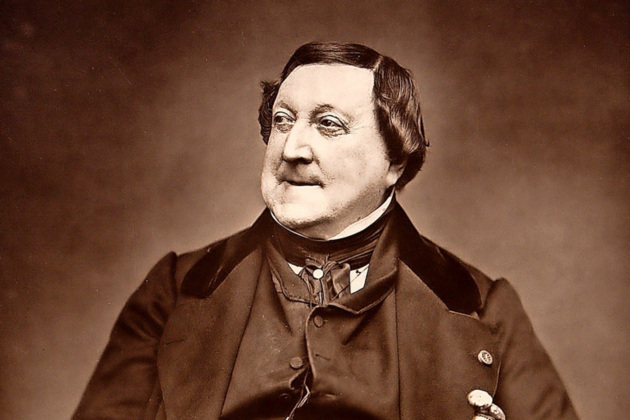by Sebastiano Bazzichetto
[adapted from The Yellow Gloves]
Gioacchino Rossini passed away on November the 13th of 1868. Hence the just-passed year marked the 150th anniversary from his death, and I thought it was compulsory to spend a few words, and some more than a few to remember him.
To say that Rossini was quite the genius it’s an easy task: he granted the world 42 operas, 17 cantatas, 8 hymns and choruses, 17 religious pieces, 29 vocal scores and 20 sonatas, for a total of 133 masterworks.

A scene from the Barber of Seville, from a production at the MET in New York
Gioacchino had an intense, rather short, musical public career that spanned from 1810 to 1829. Many of the operas staged and performed nowadays from the Italian repertoire are Rossini’s.
Like Mozart, he was quite the genius and composed his first opera when he was only 14. As he turned 18, he was able to stage La cambiale di matrimonio in Venice in the tiny Teatro di San Moisè. At the young age of 23 he was the musical director of the Teatro San Carlo in Napoli. In 1823, at 31, he left Italy for France where, in 1829, turning 37, he composed his last opera, the Guglielmo Tell. In the 40 years preceding his death, he got into a period of depression, with which he struggled by becoming a refined foodie, composing chamber music, oratorios and religious pieces. He was buried in the cemetery of Père Lachaise in Paris, but later moved to Santa Croce in Firenze, the temple that houses the remains of all Italian glories, artists and intellectuals.

A portrait of Gioacchino Rossini
After the Guglielmo Tell, the maestro suddenly fell silent. He did not touch a pen to compose an opera for nearly 40 years. In a way, Rossini retired from the scene, but kept composing chamber music and the like. He was now composing for his own pleasure, without the urgency to please the public, greedy impresarios or the prima donna of the moment. What did Rossini do in those long years before dying? As I said, he went composing for the pianoforte and smaller musical ensembles, but he also devoted himself to one of his greatest passions: food.
Gioacchino Rossini was a superb gourmet, taking delight in dishes, recipes and wines. His creativity sprang in the kitchen, orchestrating pots and plates, in the gastronomic field.
“I do not know a better occupation than eating, that is, eating in the proper sense of the term – he wrote to a friend – The appetite is to the stomach like love is to the heart.The stomach is the director who leads the great orchestra of our passions”.
His biographers recount that as a child he was an altar boy who used to drink the wine after the liturgy. Or that in his youth he often had problems with money because he could not resist the temptation of trying new restaurants and excellent, expensive wines.
He was probably the greatest culinary expert among the artists of his time.
In his beautiful Parisian house the composer used to host lavish dinner parties, serving up to 14 courses, welcoming politicians, intellectuals and artists, such as Dumas, Liszt and Verdi.
In Passy, on the outskirts of Paris, the maestro composed his final masterwork, la Petite Messe Solennelle.

Rossini’s villa in Passy
Rossini wrote it in 1863 at the request of Count Alexis Pillet-Will for his wife Louise, to whom the mass is dedicated. The composer, after more than 30 years of musical silence, described it as “the last of my péchés de vieillesse” (my old-age sins).
The extended work is a missa solemnis, but Rossini labeled it, not without irony, petite (little). It is composed for twelve singers, four of them soloists, two pianos and harmonium, a very typical conformation in the Neapolitan harpsichord tradition of the 18th century.
The mass was first performed in March of 1864 at the couple’s new home in Paris, the hôtel of Louise comtesse de Pillet-Will. Rossini later produced an orchestra version, including an additional movement, a setting of the hymn “O salutaris Hostia” as a soprano aria. This later version of the mass was not performed during his lifetime because he could not obtain permission to perform it with female singers in a church. It was first performed three months after Rossini’s death, at the Salle Ventadour in Paris by the company of the Théâtre-Italien on 24 February 1869.

One of Rossini’s most famous opera: The Barber of Seville


